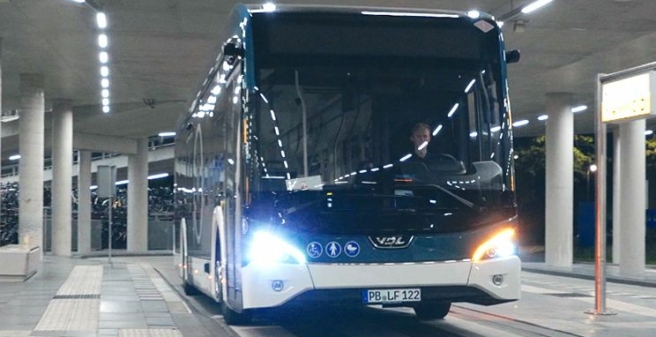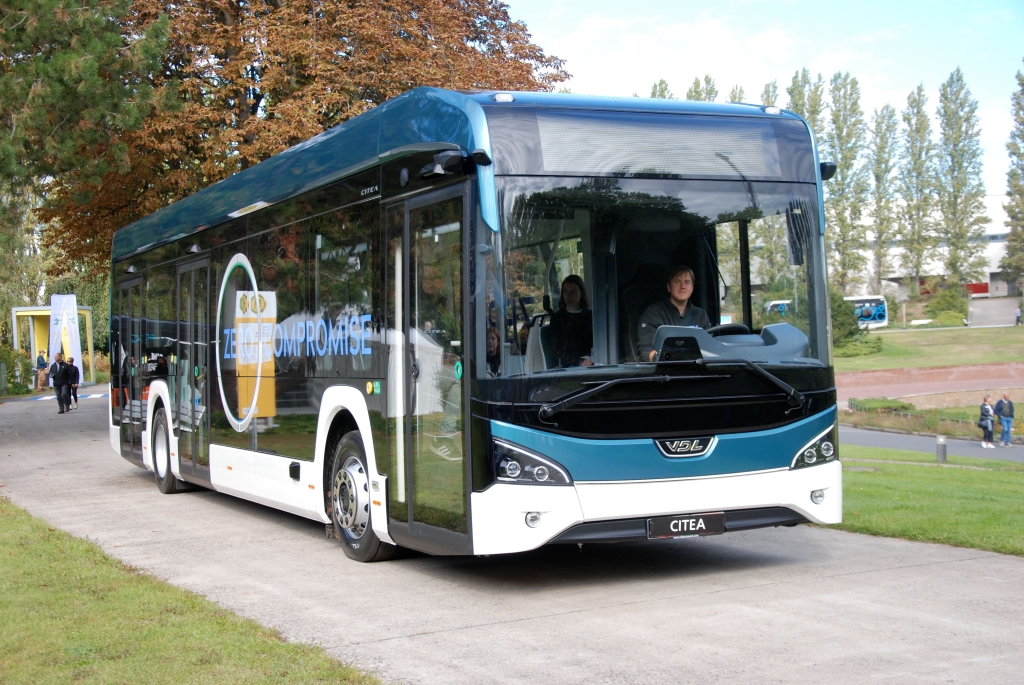
For a long time, the range of battery electric buses was something of a “problem”: the vehicles could not store as much electricity as they would have needed to run a route that leaves the depot very early in the morning and only returns almost 24 hours later. As a result, battery buses were either only used on relatively short routes – for example, those that only run around 200 kilometres a day – or they were recharged in one way or another en route. The most common method: there is a charging station at a terminus where the bus docks with a pantograph during its “turnaround time”.
But battery technology has made – and continues to make! – rapid progress. Today, some manufacturers claim that their electric buses can travel up to 300 kilometres. This means that the majority of all routes can be travelled in any transport company without having to recharge en route.
The first manufacturers are already announcing buses that will cover more than 400 kilometres without recharging. They are relying, for example, on an additionally installed fuel cell as a “range extender” (Mercedes, for example), on larger and, above all, more powerful batteries (the industry is eagerly conducting research) and, last but not least, on consistent “lightweight construction”. Weight that the bus does not have to carry around with it does not have to be set in motion using a lot of energy.
And what characterises this “lightweight construction”? One thing in particular: instead of a body made of (heavy) steel, the buses have a body made of lightweight composite plastic. Here, a mesh structure is “woven”, which is then filled with resin to form a smooth surface.

About the VDL Citea LF 122
One of the buses with such a composite body is the new Citea LF 122 from VDL, which was presented last year. Unlike its predecessor, it is only available as an electric bus, meaning that VDL is no longer building diesel buses. And is by no means alone in doing so. Batteries are now so flat that they have been installed under the low-floor floor (!) of the new Citea. They don’t take up any space there and, in contrast to a vehicle with batteries on the roof, they give the bus a very favourable centre of gravity, and with the batteries “underfloor” the vehicle is also not so high, so that it can also pass through lower subways. One example is the Rheinallee subway in Bonn, which is too low for buses with batteries on the roof, but is used by several lines.
The MaxiMile test
On 10 and 11 September, VDL wanted to find out: how far can our new Citea travel on one battery charge without recharging, and how long can it drive?
The test tour began on 10 September at the VDL plant in Valkenswaard in the Netherlands and led to the neighbouring city of Eindhoven, where the car was then driven for around 24 hours in a SORT 2 (SORT = Standardised On Road Test) test on Eindhoven city lines and on the line to the (slightly outlying) airport. (Interestingly, the test vehicle was registered to VDL Germany in Büren near Paderborn with the pretty licence plate number “PB-LF 122”, i.e. it had its type name on the licence plate).
With “passengers” in the form of dummies filled with water “sitting” on the seats, it had been given a realistic total weight of 16.5 tonnes. Realistic because a bus will only rarely be filled to the last seat. During the journeys on the Eindhoven routes, all stops were “served” (even if passengers were of course not taken on board) in order to reflect realistic use in regular service. There were deliberately no breaks so that the car could maximise its performance. And the drivers were replaced every eight hours – a very realistic regular service in this respect.
As mentioned, the test tour started on 10 September at 1 p.m. at the VDL Bus & Coach headquarters in Valkenswaard, and the battery level was exactly 100 percent. The batteries have a capacity of 490 kWh. At 3.14 pm on 11 September, the vehicle returned to the factory in Valkenswaard after 26 hours and 14 minutes and 546.7 kilometres. It could have driven even further, as the battery charge level was still 3 per cent. On average, one stop was served every 1.4 kilometres (the express bus route to the airport with only a few stops has an effect here), and the average speed was 20.84 km/h. This is also not unusual for a bus on a regular service.
Conclusion
The “MaxiMile” test of the VDL Citea LF 122 proves that recharging electric buses on the route will become more and more superfluous. Overnight recharging at the depot will be sufficient. This is very similar to the diesel bus: it also only refuels at the depot at night and not several times throughout the day. And comparable operating conditions for diesel and electric buses are the goal of development. If not better conditions for the electric bus, because it will be cheaper to buy and operate than a diesel.
02.12.2023
